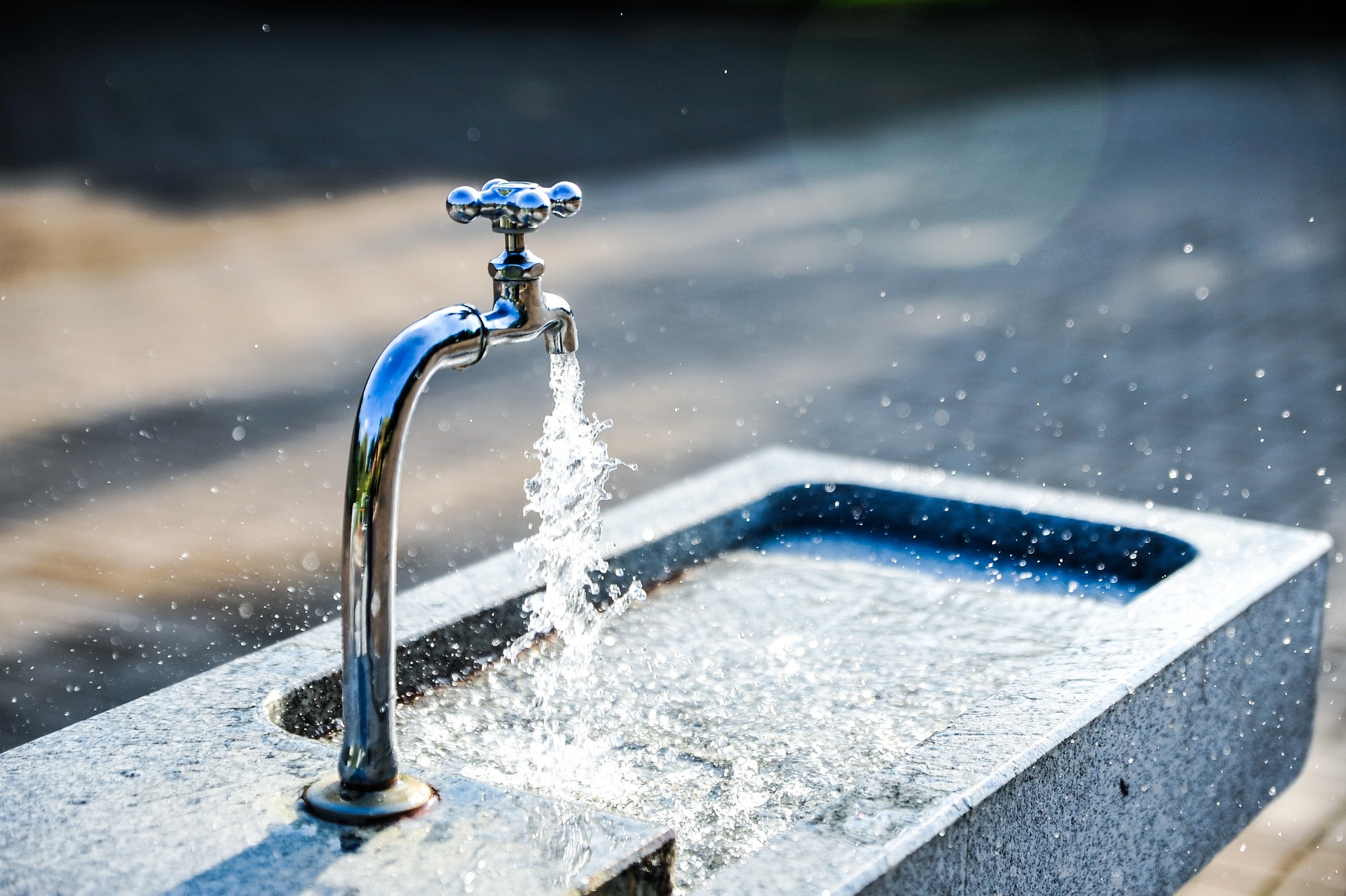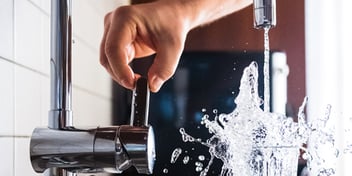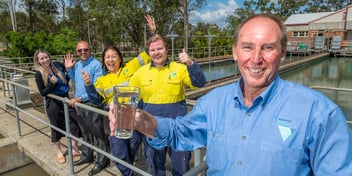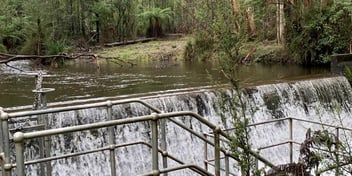What’s behind TasWater’s best tasting tap water?

Tasmania has won the award for Australia’s best tasting tap water for the third time in eight years, with the utility set to represent Australia in the USA against the best in the world at the international final in 2024.
Water from TasWater’s Fern Tree treatment plant took out the 2023 IXOM Best Tasting Tap Water in Australia title last month, with the utility also winning the same award for water from the Barrington treatment plant in 2016 and Rossarden in 2020.
TasWater Water Quality Manager Steve Westgate said he is thrilled the utility’s drinking water has been named Australia’s best for a third time and is hoping for another win at the international competition.
“There is considerable prestige just to reach the national final of the competition and as winners we earn some big bragging rights,” he said.
“Let’s hope Fern Tree can repeat the success of water from Rossarden, which won world’s best at the Berkeley Springs International Water Tasting event in 2021.
“Tasmania is known across the world for its quality produce, and seeing water added to that list two years ago was a proud moment for all of us.”
While TasWater is certainly making a name for itself when it comes to excellent drinking water, Westgate said the success comes down to continued investment and effort.
“Maintaining this quality takes work, and last year we invested nearly $120M in water treatment across the state to make sure great tasting, safe and reliable drinking water is delivered to all TasWater customers,” he said.
“This is a team effort by dedicated TasWater operators striving to achieve great things together as well as delivering on our commitment to Tasmanians.”
Award-winning operations
With water at the Fern Tree Treatment plant sourced from rainfall and snowmelt that runs down the slopes of kunanyi (Mt Wellington), Westgate said achieving excellent quality water at the plant requires minimal treatment processes, but a lot of operational know-how.
“The system itself actually only uses fluoridation and disinfection. It's a non-complicated system because the water is already really good. Our operations team monitors quality, and if there are any issues, they are able to move water around and close it out of the system,” he said.
“It sounds like an easy process, but it's actually quite a challenge for the team to juggle. Weather in the catchment can change quickly. I believe this drinking water quality award actually celebrates operational excellence.”
TasWater Water Process Adviser Tony Grueber said that while the water coming into Fern Tree treatment plant is usually already high quality, operators are able to manage water distribution to mitigate quality issues as they arise.
“It's a pipe system with control valves, which means that when water is out of spec, we can isolate and stop that water reaching its destination. Adverse weather conditions, like storm fronts, are the most likely to take the water out of spec,” he said.
Journey to success
Westgate said TasWater’s continued recognition for excellent drinking water in recent years is a result of a decade-long journey that began in 2012 when the utility first formed.
“When we merged, we did a state wide benchmarking review. We looked at all our assets, and took stock of what was working well and what wasn’t. Considering risk, we put a number of boil water notices in place at that time,” he said.
“And we knew this was an area we really needed to focus on. This led to the launch of our 24glasses Regional Towns Water Supply Program, which is when we made a commitment with the state government to work together to improve drinking water across the state.”
Rossarden was part of the 24glasses program, which saw the implementation of pre-packaged membrane water treatment systems across Tasmania to address ongoing water quality concerns and boil-water notices.
“It was done at a relatively low cost. It allowed us to address huge amounts of our water quality issues across the state. Since then, we’ve had an aggressive capital investment program. We have spent big on water quality over the past 10 years,” Westgate said.
After taste and odor concerns in Hobart in 2018, the utility began to increase efforts towards ensuring high-level aesthetic compliance.
“We have response processes in place for aesthetic issues,” Westgate said.
“We set up a tasting panel in the lab to determine if there was any adverse taste and odours, and now have the capability to jump on those problems quickly if needed.”
Investing in excellence
The collective focus on quality and aesthetics has certainly taken TasWater’s drinking water to new heights, but Grueber said there has also been operational improvements across the utility’s network thanks to increased training and investment in equipment.
“We have a lot more training and education about the distribution system for operators now. But also more updated equipment. These days, all our operators carry chlorine, turbidity and pH testing machines everywhere they go,” he said.
“TasWater has invested a lot of money in monitoring equipment. It makes it much easier to monitor water quickly, and keep an eye on water quality day by day, minute by minute.”
Grueber said increased instrumentation in the system has also helped to greatly improve water quality management, including allowing for a more proactive approach to potential issues.
“We've got a lot of instrumentation in the system now. While it used to be all manual before, we now have inline chlorine and turbidity analysers, so we can monitor that through SCADA and look at our trends and see any changes,” he said.
“Also, it helps to pick up problems before they happen. We can see the change coming. We can be proactive and fix the issue before it becomes a real problem.”
Westgate said another key improvement that’s benefited the utility’s approach to drinking water quality is improvements in organisational communications and collaboration.
“It's an invisible win, but in the last four to five years there's been a huge improvement in communication and collaboration within the business, as well. This is something that’s really paid off in the last few years,” he said.
“But we’ve also been working on our relationship with our customers and working with the community to regain and maintain high levels of trust.”



